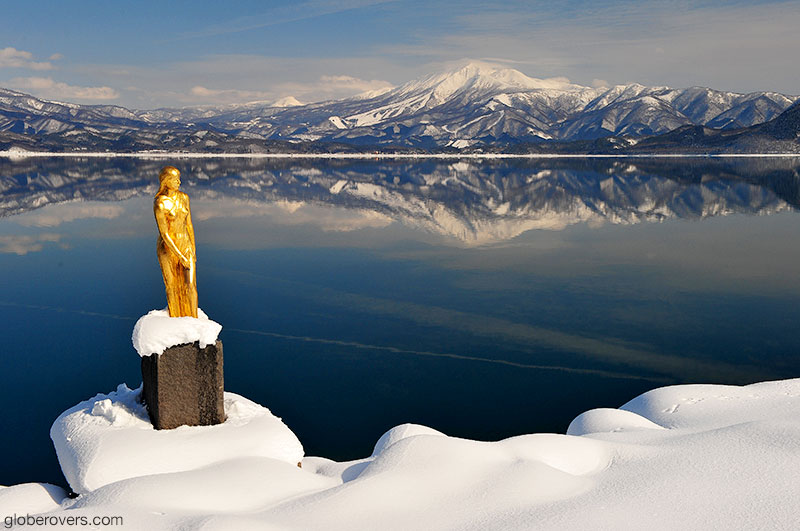
Anthony Bourdain, the celebrity chef, author, and popular travel documentarian who took his own life in 2018, once said: “Japan is endlessly interesting to me. After going on nine filming trips there, I don’t think I’ve even scratched the surface and I don’t think I ever will”. He was especially fond of the food in Japan and proclaimed: “If I had to eat only in one city for the rest of my life, Tokyo would be it”.
Most travellers who have been to Japan will agree that Japan has more to offer than one person can experience in a lifetime. I personally have been to Japan numerous times and I too still feel that I have not scratched the surface.
In addition to the beautiful natural snow-covered scenery in winter, Japan’s culture smoothly intertwines with this special time of the year.
While the Japanese archipelago consists of 6,852 islands, roughly arranged in the shape of a dragon, its total land area is 377,973 km² – a large area to explore. Being a long skinny country stretching from the southernmost island of Okinotori in the Philippine Sea all the way up to the northern tip of Hokkaido Island near Russia’s Sakhalin Island, the distance – as the crow flies – is approximately 2,840 kilometres (1,765 mi).
However, the uninterrupted drivable distance from the southern end of Kyushu Island to the northern tip of Hokkaido Island is about 2,780 kilometres (1,727 mi).
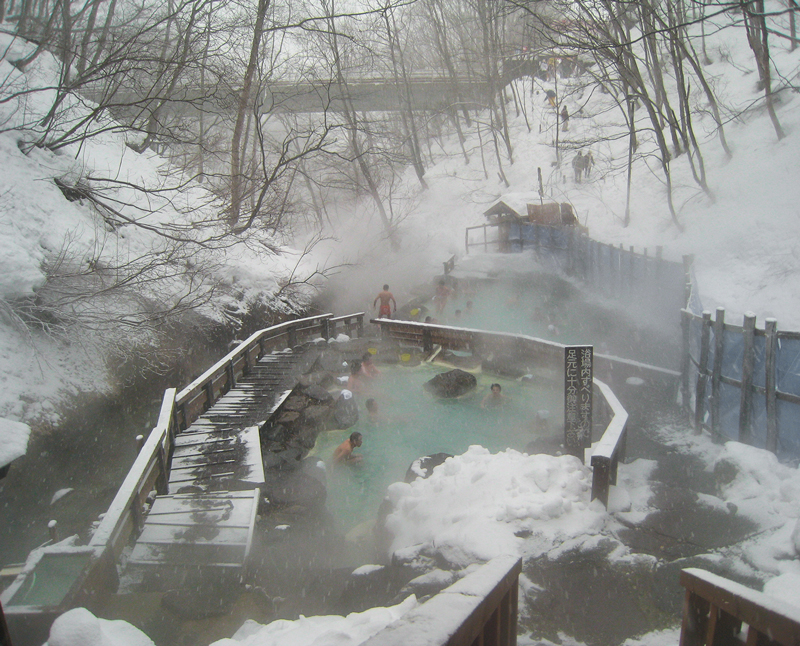
The first challenging decision when planning a trip to Japan is the choice of season as Japan has four very well-defined seasons: Spring is time for the famous cherry blossoms (locally known as sakura), the season for which Japan is most well known. Summers are hot with lush-green landscapes, while in autumn, Japan’s trees and shrubs explode in colours of yellow, orange, red, purple and all shades in between. During winter, much of Japan turns into an idyllic winter wonderland.
Every season is a good season to visit Japan. Summers are great for festivals and fireworks, though it can get quite hot and humid. Spring and autumn are arguably the most pleasant seasons, while winter is the most exciting with all the winter sports, steaming hot springs (locally known as onsen), snow and ice festivals, rare wildlife, illuminated villages, and don’t forget the hot Japanese rice wine (locally known as sake) on cold winter nights.
If you want to experience the beauty of the cherry blossoms, then visit during March and April. The peak period for the blossoms is mid to late March on Kyushu and mid to late April on Hokkaido.
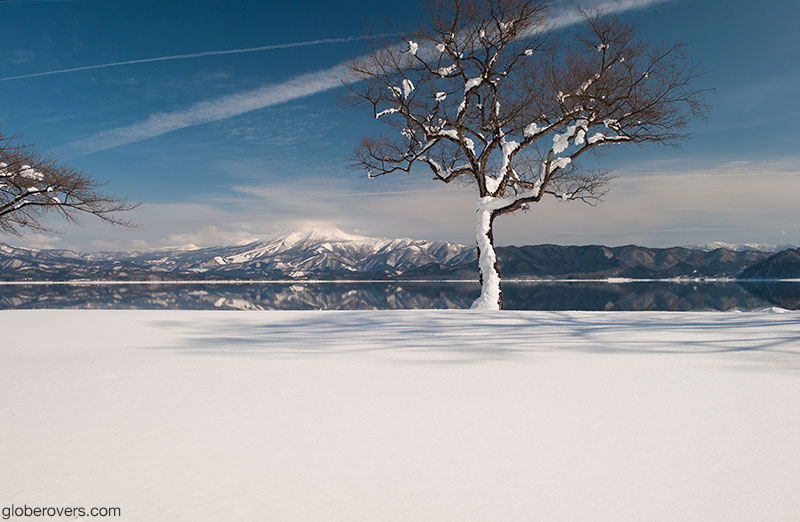
If you are more interested in the vibrant glowing orange and red colours of autumn, then visit between late October in the north all the way to mid-December in the south. Autumn first arrives in the far north of Hokkaido, and then slowly moves south to Kyushu, the same directional flow as the winter snow-falls.
You may think of winter as a dreadfully cold and depressing time of the year. While this can be true, this perception mostly applies if you are living in Japan and have to commute to work in icy conditions and shovel the snow in your driveway.
As a traveller, no little inconveniences brought on by winter will bother you. On the contrary, all that will matter to you is sitting in a steaming hot spring while the gently falling snowflakes create a white hat on your head. Relax and have another hot sake rice wine while thinking about your cross-country ski routes.
Japanese winters are relatively brief. Starting around late November or early December, the winter season generally continues until the end of February or early to mid-March.
As expected, the further north you travel, the longer and harsher the winters are. In some parts of Hokkaido in the far north, and in the mountainous regions, winter can be even longer and colder. Generally, the coldest temperatures come around in February when the mercury can drop well below freezing point.
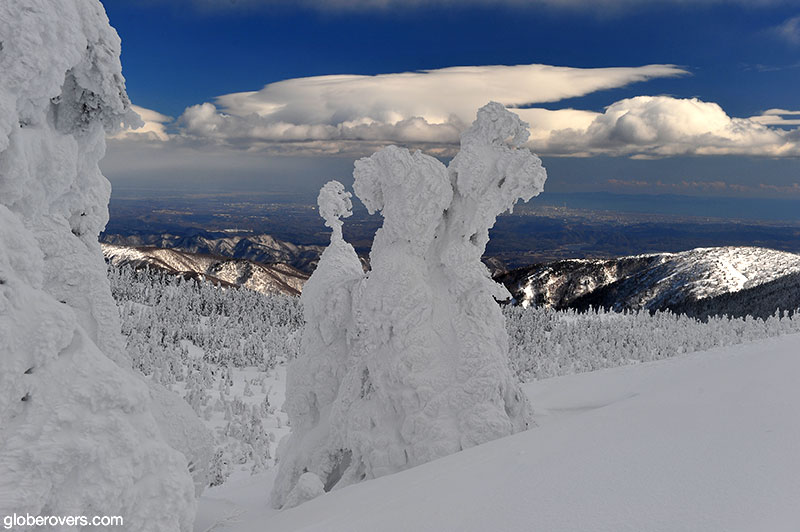
While the southern islands of Okinawa never see snow, heavy snowfalls are frequent along the coastal mountains on the Japanese Sea facing Russia and Korea, the northern parts of Honshu, and all of Hokkaido.
Come along as we explore a few of Japan’s most idyllic winter wonderlands.
In the lower-northern part of Honshu, we visit Zao Onsen and Ski Resort, also famous for its Juhyou frosted fir trees.
After Zao, we travel further north to Lake Tazawako and the nearby Tsurunoyu Onsen.
While Japan is great any time of the year, winter is truly special.
As Hokkaido is the most idyllic winter spot of Japan, we then take the train north through the Tsugaru Strait that separates Honshu Island and Hokkaido Island. After a brief stop to attend the snow festival in Hokkaido’s capital Sapporo, we head east to the Kushiro Marshes to spend time with the red-crowned cranes performing their love dances in the snow. From there, we travel north to the shores of Lake Kussharo, home to the large white whooper swans dabbling on the hot springs, surrounded by snow.
Before we start our travels, we first consider ten brilliant reasons for visiting Japan in winter. After that, come along as we visit two winter wonderlands on northern Honshu Island before we move further north to Hokkaido.
Choosing the right season to visit Japan is a tough decision. While the best decision is to visit Japan during all four seasons, winter is the most exciting time. Here are ten of the best reasons why winter is a great time to visit Japan:

Table of Contents
1) Fewer Tourists In Winter
The surge in foreign visitors to Japan has been the result of a gradual easing of Japan’s travel visa requirements since 2013, as well as an increase in the number of Asian budget airlines flying into Japan. The depreciation of the Japanese yen has also boosted tourist arrivals.
The number of tourist arrivals from China increased four-fold over a five-year period so that China has overtaken South Korea as the top source of tourists. The Asia region now accounts for about 85% of all tourist arrivals in Japan. According to the Japan National Tourism Organization (JNTO), the estimated number of international travellers to Japan in June 2019 was about 2.9 million, a 6.5% increase from the previous year and the highest tourist arrival number for the month of June, ever.
To avoid the crowds, visit throughout the winter months when you will find many of the country’s most iconic sights almost completely deserted. Gone are the madding crowds from spring, summer, and autumn.

2) The Japanese Onsen
A Japanese onsen is a mineral-rich geothermal natural hot spring bath. On a cold and snowy day, there is simply nothing like sinking into a steamy outdoors bath (locally known as rotenburo) while snowflakes are gently falling all around you. While the steaming mountain-stream meanders through the snow-covered woods and flows right into your natural rocky bath, you sip on a hot sake and know you came to the right place.
The onsen, as well as the sentō (community bath-house), are integral to Japanese culture. While a visit to one or two sentō is a great introduction to this part of Japanese culture, the onsen is where you want to spend more time.
Some onsen are traditional cedar-panelled baths in large themed complexes where you can bathe in a variety of waters from milky white coloured water, to aromatic water smelling of honey. The rotenburo outdoor bath that hugs the side of the jungle or a picturesque creek, is where you want to be, especially in winter.
Japan has so many beautiful onsen all over the country that it is hard to single out the best. Even so, make sure to visit the tranquil onsen town of Ginzan in Yamagata Prefecture, one of the most historic and picturesque onsen towns in Japan.
The town is located along the banks of the Ginzan River and also offers beautiful wooden ryokan, the traditional onsen inns. Another onsen area not to miss is the Noberibetsu Onsen region of Hokkaido, as well as Zao Onsen and Tsurunoyu Onsen in the northern part of Honshu Island.

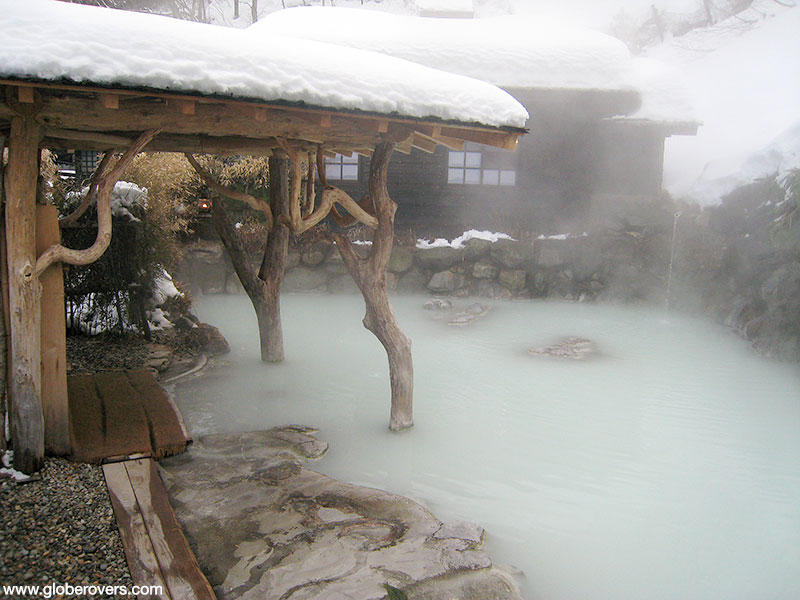
3) Hot Sake (Rice Wine)… in the onsen!
Going hand-in-hand with the onsen experience, though certainly not limited to the onsen, is the Japanese culture of enjoying heated sake (Japan’s native rice wine) on a cold winter’s day or night.
While sake is enjoyed straight from the fridge during the rest of the year, during winter there is nothing better than to warm yourself up with a glass of hot sake. Enjoy your sake in the onsen, or huddled inside your traditional ryokan (travellers inn) or in an izakaya (small Japanese pub). Sake comes in a variety of types and qualities, with prices to match.

4) Winter Festivals
Japan is well known for its elaborate show festivals. While there are many such festivals all over Japan, the most impressive is the Sapporo Yuki Matsuri (snow festival) on Hokkaido Island. Lasting one week in February, Sapporo’s festival features illuminations, skating, toboggan runs, ice bars, many kinds of winter games, and enormous sculptures created from ice and snow. Some of these works of art measure up to 15 metres (49 ft) tall and 25 metres (82 ft) wide. In the neighbouring town of Otaru, check out the Light Snow Path Festival.
Some other festivals to consider are the Tokamachi Snow Festival, Asahikawa Winter Festival, Akita’s Yokote Kamakura Festival, Tochigi’s Yunishigawa Onsen Kamakura Festival, and the Snow Monsters Festival of Zao in Yamagata.
Watch out for the traditional kamakura (igloo-like snow huts or domes) which are traditionally made in the Tohoku region and in northern areas of the Kanto region, such as at the Yunishigawa Kamakura Festival. At night, the town is lit up with hundreds of small kamakura with candles and turns into a magical winter wonderland.
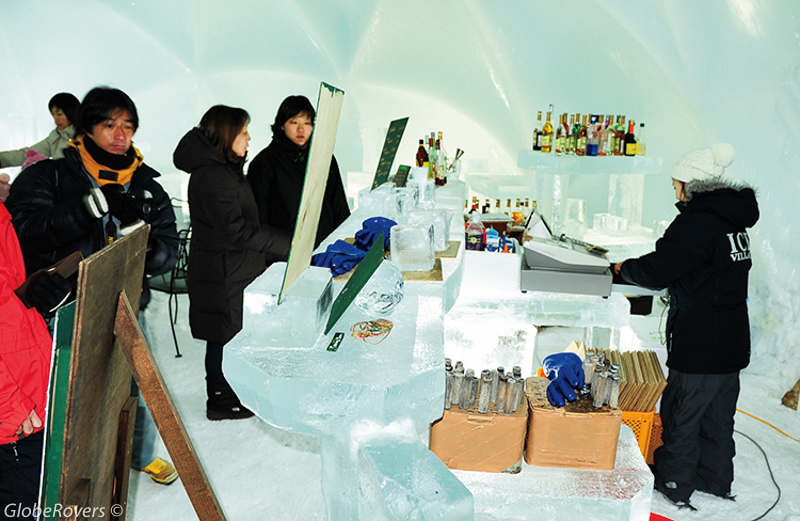
5) Winter Sports
Japan is over 70% mountainous, boasts over 500 ski resorts, and receives some of the world’s most reliable snowfall. It is not hard to find excellent ski resorts with sweeping ski-runs and superb powdery snow alongside stunning natural beauty and romantic accommodation where hospitality is top-notch.
Just 200 kilometres (124 mi) northwest of Tokyo is Yuzawa in the Japanese Alps. The area is world-renowned for its heavy snowfalls and a prolonged winter season with excellent trails for skiing and snowboarding. Furthermore, Yuzawa is blessed with several hot springs, some dating back 900 years. The Kaido-no-yu onsen has outdoor pools with breathtaking views of the surrounding snow-capped mountains.
While some of the best ski resorts are in Hokkaido, the Zao Ski Resort in Honshu is unique as you can ski past the “snow monsters”. More about Zao and its “snow monsters” later.
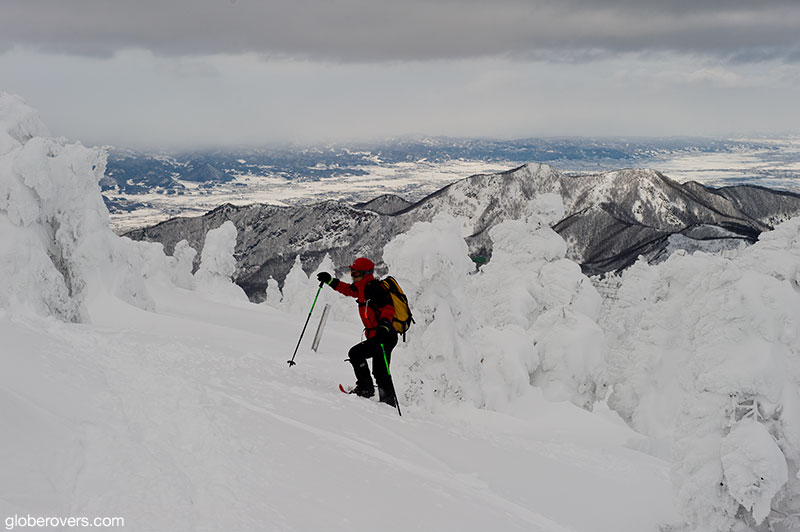
6) Ice And Icicles
Along with the cold winter temperatures come the ice and icicles. One of the most accessible places to showcase this beautiful winter phenomenon in Japan is in Misotsuchi. Here gigantic icicles are created by water flowing over the cliffs located upstream from the waterfall in the Chichibu area of Saitama Prefecture, just over 100 kilometres (62 mi) northwest of Tokyo.
Nearby is the Onouchi Hyakkei Icicle Park in Ogano and the Ashigakubo Icicles which are artificially created when water is sprayed over the trees in the frigid cold, resulting in wildly shaped ice crusts on the branches. If you are here on weekends during January and February, you will see the special lighting that mystically illuminates the icicles.
Some of the many other places to see icicles are at Gouradani, also known as Nanshoga near Shojidake in Fukuoka Prefecture, and the fir trees of Zao Onsen in Yamagata Prefecture.
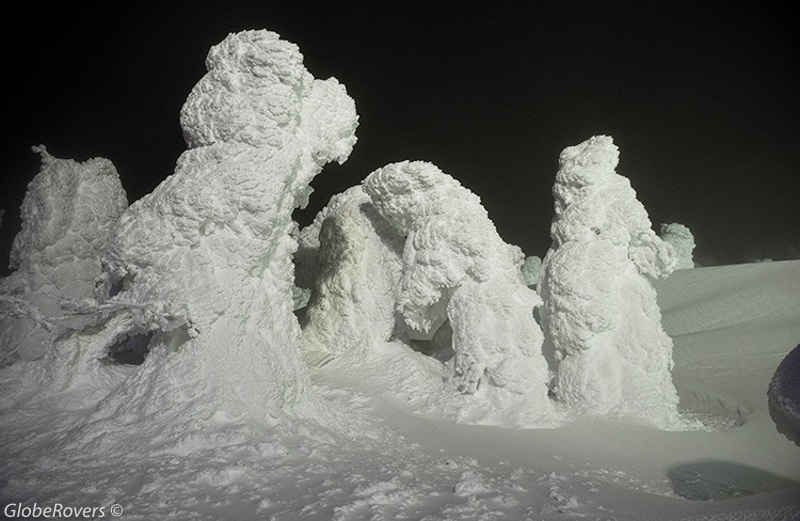
7) Winter Illuminations
The “chasing of illuminations” is a favourite romantic pastime for Japanese families and couples. Japan has no shortage of the most impressive winter illuminations you have ever dreamt of.
Almost every major Japanese city has at least one winter light illumination area. Tokyo has several, such as the Caretta Shiodome Illuminations, Roppongi Hills Christmas Lights, and the Tokyo Midtown Christmas Illuminations. The Shiodome illuminations are arguably the most impressive.
There are many illumination events held across the country of which the most spectacular is the Nabana no Sato of Kuwana city in Mie Prefecture. Over 8 million LED lights are used to create the mind-blowing art-of-lights in the vast park where you will find the impressive “Tunnel of Lights”. Truly a fairy tale. While watching the lights you can also enjoy the local Nagashima-chi Beer and natural hot springs. West of Tokyo is the equally impressive light show at the “Lake Sagami Pleasure Forest” in Kanagawa.
.
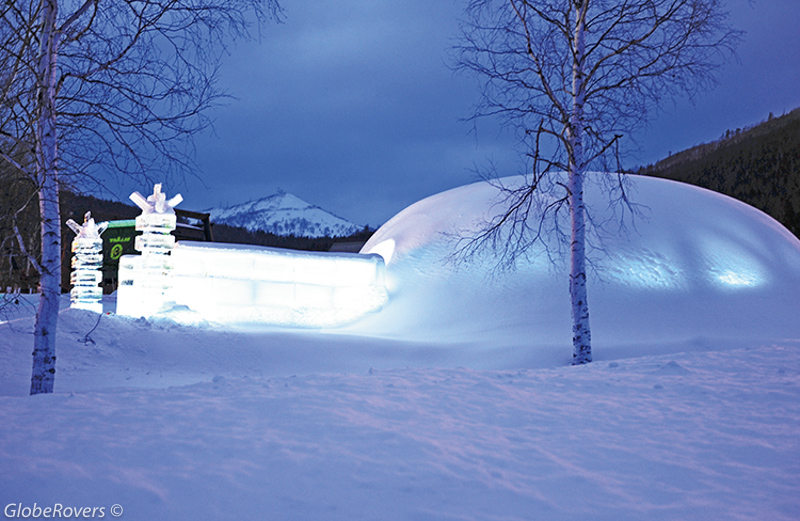
8) Winter Villages
One of the best places to spend a night or two during Japan’s winters is in a “winter village”. When quaint traditional Japanese villages are covered in fluffy thick white snow it creates a wonderful atmosphere, especially when they are modestly illuminated.
One of the most charming and rustic traditional Japanese villages to visit in winter after heavy snow, is the Shirakawa-go village in central Japan, a tiny village located 300 kilometres (186 mi) west of Tokyo in Takayama, Gifu Prefecture. The village is a collection of original thatched farmhouses with tall pointed roofs in the gasshō-zukuri style, meaning ‘praying hands’ which reflects the shape of the roofs. When snow-covered and illuminated it creates a scene straight from a Christmas card. The village is best viewed from the observation deck above the village.
To control overcrowding, from 2019 onward new regulations are in place that require visitors to make an online reservation. Alternatively, the villages of the Gokayama region are still mostly unaffected by mass-tourism. In this region, check out the villages of Gokayama, Suganuma, and Ainokura.
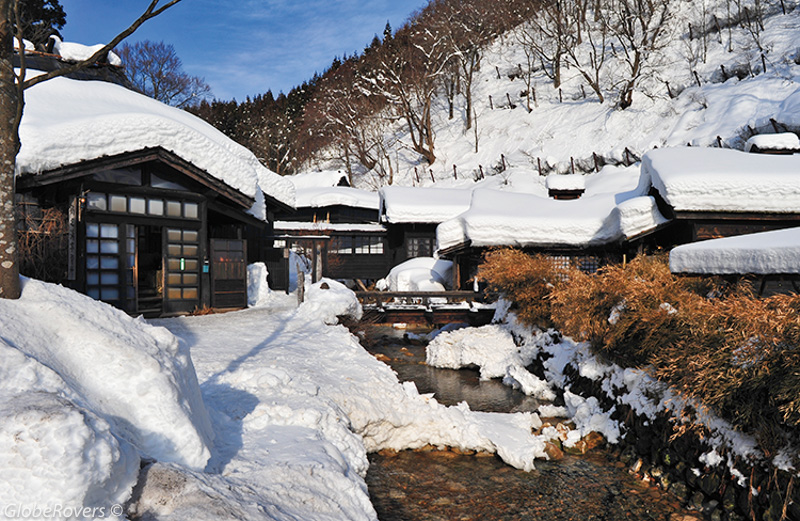
9) Japanese Shrines
Shrines in Japan are very photogenic, in particular those with alleys or tunnels, made of many torii gates lined up in a long row. Torii gates are most commonly found at the entrance of, or within, a Shinto shrine, where they symbolically mark the transition from the mundane to the sacred. Attending a Shinto shrine when it is covered in snow is an exhilarating sight.
Kyoto’s Kifune Shrine with its many torii gates is one such shrine not to miss when covered under a thick blanket of show. When the shrine is illuminated at night, the snowy fairy tale comes alive.
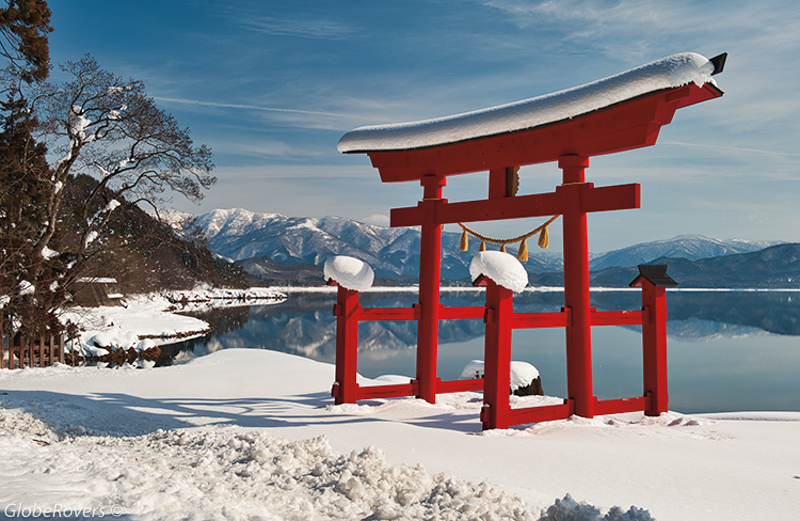
10) Winter Wildlife
While you may not think of wildlife as a reason to visit Japan in winter, this is a major drawcard for birdwatchers and photographers with their big cameras and long lenses who flock to Japan, mainly to Hokkaido, during the winter months.
While the coldest parts of Japan such as Hokkaido have mammals including the red fox, spotted deer (also known as the Japanese deer or sika deer), sable (a small carnivorous mammal primarily inhabiting the forest), northern fur seal, and Steller sea lion, the main attraction is the birds.
Hooded and white-naped cranes are present in Kagoshima Prefecture of the southern island of Kyushu, though the biggest draw is Hokkaido. Here you can see the revered Red-crowned cranes performing love dances in the snow, while the Whooper swans (pronounced hooper) congregate where the hot springs flow into the partly frozen lakes. More about these birds later.
February is an ideal time to spot the Steller’s sea eagles at the northernmost areas of Hokkaido where the sea-ice extends down the Sea of Okhotsk reaching the northeast coast of Hokkaido and in particular the Shiretoko Peninsula. While in Hokkaido, keep an eye out for the Ural owl that is active day and night, though it is primarily nocturnal. The Blakiston’s fish owl is also a resident of Hokkaido.
Convinced that winter is the most exciting time to visit Japan? Now let’s start our journey!
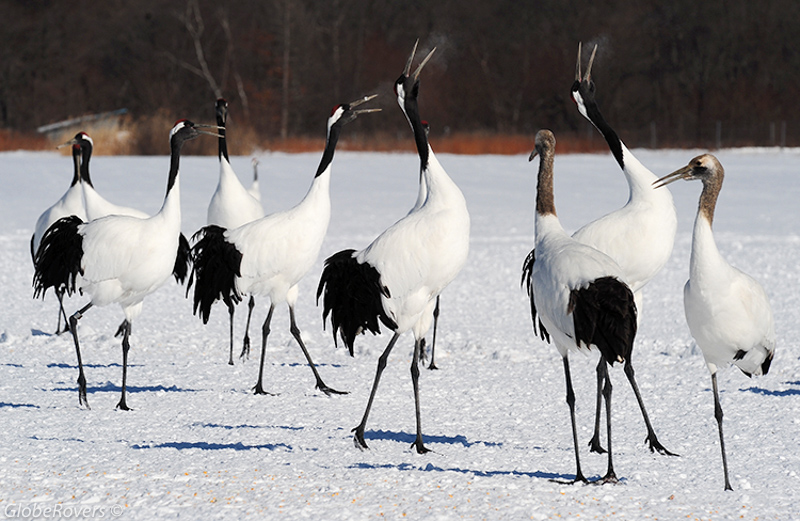
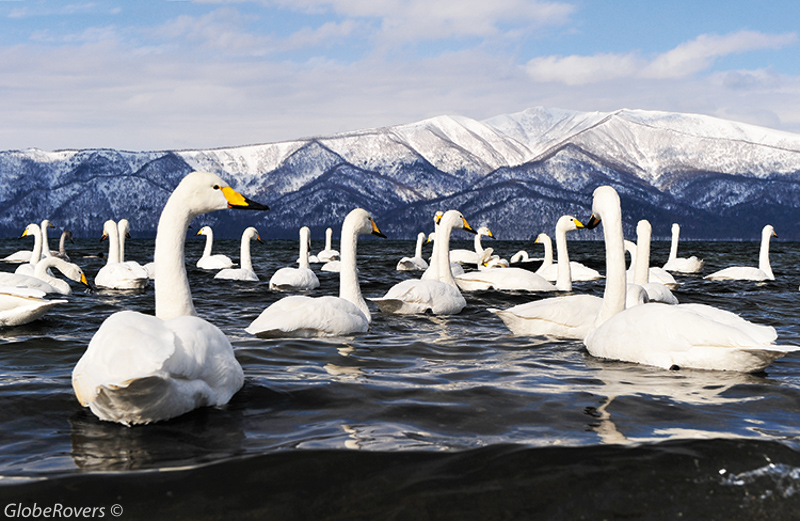
Links to all posts of Japan in winter
COMING SOON

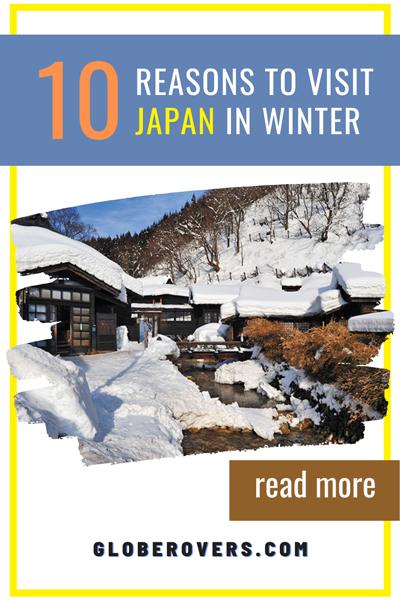
Further reading:
- Everything you need to know about Japan’s Tōhoku Matsuri Festivals
- 10 Places to Visit in Hokkaido
- Okinawa – Japan’s Paradise Islands
- 10 Great Winter Activities in Japan

Blog post and photos by Peter who has been travelling almost full-time since 2005 and has been to over 122 countries. He visited several countries, such as Japan, more than 20 times. Peter is Editor-in-Chief and Publisher of GlobeRovers Magazine, an independent travel magazine focused on intrepid destinations.
